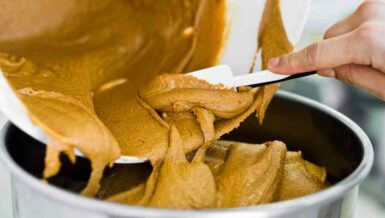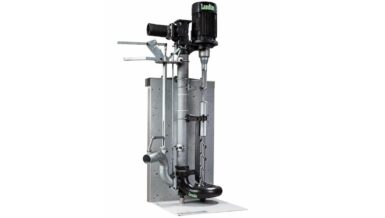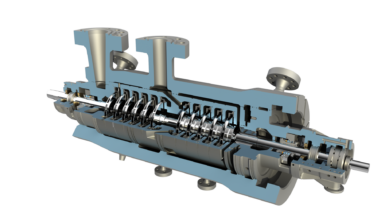The dairy sector is at a crossroads. The current shifting consumer tastes, increasing demand for sustainability and price pressure is pushing dairies to consider changing mature and proven processes. On top of this, labour shortages, freight disturbances, and input-cost escalations experienced in the past 12 months are increasing pressures further, according to recent analysis1.
Despite the challenging environment, a recent McKinsey report2 revealed that 2021 proved a stable year for the industry, with three-quarters of surveyed dairy leaders reporting neutral or improved margins. Almost 80% of executives expect over 3% revenue growth in the next three years, with three-quarters expecting even more. And the sector is looking even brighter for certain dairy products — although US fluid milk sales have declined over the past five years, 79% of executives saw increased demand for other dairy-product categories.
Among the dairy product markets, cheese stands out as a major focus area. The global cheese market achieved a value of US$ 77.6 Billion in 2021, and expects it to reach US$ 113.3 billion by 2027, exhibiting a CAGR of 6.31% in that period3.
Manufacturing Efficiencies are Key to Success in Cheese
In cheese production, the key focus is the same as that of the wider dairy sector – manufacturing efficiencies remain the main source of competitive advantage. This does not call for huge investments in complete processing line reconfigurations, but rather for switching technologies to increase efficiencies.
When producing cheese, it is essential to keep product integrity high and avoid waste. This goal is achievable but requires careful handling of the curds and whey. Assuming the correct pump is deployed, this is an operation where genuine savings can accrue. Here, it is vital to:
- Reduce the amount of fines
- Retain the fat content of the cheese curd to avoid any transfer into the whey
By the very nature of their operation, certain pump types (such as lobe pumps) will break curd into fines that pass through whey screens on drain tables.
The generation of cheese fines is in direct relation to production loss, which means cheese manufacturers produce less cheese from a certain quantity of milk. The result is that, after each cycle, these fines require reprocessing for use as a second-grade product.
Customers transferring cheese curd need a pump that gently produces a constantly displaced volume. Such a pump will generate a higher cheese yield by lowering the fines content.
Boosting Profits by Changing Pumps
Consider a cheese plant with a total annual cheese production of 50,000 tonnes. The amount of milk required to produce 1 kg of cheese varies according to cheese type, but assume an average of 8 litres. By switching to a MasoSine Certa pump from Watson-Marlow Fluid Technology Solutions (WMFTS), it is possible to generate significant savings in relation to fines, moisture content versus dry matter, and fat.
Fines Reduction
Customer trials reveal that a cheese plant of this capacity using a MasoSine Certa pump will enjoy a 0.9 kg average reduction in fines per tonne of cheese production in comparison with competitors using a lobe or twin-screw pump. Moreover, the increase in cheese yield per year will be in the region of 45,000 kg, saving such a cheese plant €54,000 a year.
BOX – From Theory to Reality – Real World Advantages of Fines Reduction
Among the cheese plants exemplifying the path to better returns and less waste is a major Scandinavian dairy producer. This large facility has an annual cheese output of approximately 70,000 tonnes.
By replacing its existing lobe pump with a MasoSine Certa pump, the cheese manufacturer achieved an average fines reduction of 900g per tonne of manufactured cheese. When multiplying the annual output of 70,000 tonnes by 900 g per tonne, the additional annual yield is 63 tonnes of cheese. With a price difference as much as approximately €1.20 per kg, the cheese plant is enjoying increased profit of €76,000 per annum thanks to its new investment.
Moisture Retention
The story is similar when scrutinising moisture content versus dry matter. According to the same customer trials, using MasoSine Certa pump technology rather than a centrifugal pump will see a better retention of moisture (whey) within the curd after pumping. In addition, the increased weight (yield) of cheese curd will amount to circa 5 tonnes per year. With an average price per kilogram of cheese at €3.00, the annual savings will be €15,000.
Cutting Fat
Producing 50,000 tonnes of cheese a year requires around 400 million litres of milk. Trials indicate that the average reduction of fat (cream) content in the whey when using a MasoSine Certa pump is around 0.03%. This is beneficial because the higher the fat content of the whey, the worse the result after it is pumped. As the proportion of whey to curd is about 80%, the cheese plant can save around 96,000 litres of fat per year, equating to savings of €96,000 based on a price per litre of €1.00.
Total Savings from Reducing Fines, Dry Matter, & Fat
Combining saving, our theoretical cheese plant producing 50,000 tonnes of cheese a year can potentially expect the following from its investment in a MasoSine Certa pump:
- Total annual savings of €165,000 from fines, moisture content versus dry matter, and fat
- A return on investment for its MasoSine Certa pumps in just 8 months
Reducing Processing Costs and Increasing Yields – A Case Study
A market-leading cheese maker based in Denmark is showing how to boost yields and cut the costs of cheese processing through astute investment in optimised pump technology. The existing lobe pumps were causing two key problems. Firstly, shear damage from lobe pumps meant increased fines were entering the whey stream and reducing yield. The second issue was their limited suction capability. Reduced suction causes system cavitation that can lead to broken pipe joints and welds, increasing maintenance and unplanned downtime.
Installing two MasoSine Certa pumps led to significant fines reduction as they treated the fragile cheese curd more gently and caused less damage. In each tonne of cheese produced, MasoSine Certa pumps gave 2.552 kg of fines per tonne of cheese compared to the 3.481 kg produced by lobe pumps, saving 0.929 kg fines per tonne, equating to a 27% reduction in lost cheese fines.
The dairy produces 70,000 tonnes of cheese every year. Using the MasoSine Certa pump, an extra 65 tonnes of cheese is produced annually (0.929 kg/t x 70,000 tonnes = 65,030 kg) with a value of DKK 780,000 (approximately €105,000). As a result, the dairy’s CAPEX investment for the two new MasoSine Certa pumps achieved ROI in just 9 months.
Soft Cheese Successes – A Case Study
When pumping sensitive curds, it’s vital to convey them as gently as possible. Otherwise, strong shear results in cheese dust, risking a reduction in yield and quality. With these thoughts in mind, a major mozzarella dairy in Switzerland wanted to replace its previous time-consuming and laborious transfer of curd/whey mixture into filling tubs with a high-performance feed pump that would transfer the mix directly into a new drainage system via pipes.
Searching for the most suitable pump for the task, the cheese plant’s milk technologist and production manager for cream cheese pooled their knowledge to design a series of comprehensive tests with different pump types, including:
- A centrifugal pump
- Air operated diaphragm pump (AOD)
- A twin screw pump
- A MasoSine Certa pump from WMFTS
By carefully dimensioning the pumps, all candidates met the specified production time of around two hours for a batch, transferring 5,000 litres in under 25 minutes. However, when analysing the results, considerable qualitative differences quickly became apparent.
The centrifugal pump reduced fat content of the cheese curd, while the compressed air operated diaphragm pump incurred considerable yield losses due to the formation of cheese fines. Due to its geometry, the screw pump reduced broken grain size. Processing finer curd is undesirable due to the poor quality of the resulting cheese.
The clear winner was the MasoSine Certa pump, which achieved the highest yield and the lowest loss due to cheese fines and the fat remained in the curds. Product quality also improved from the gentle pumping of sinusoidal technology.
Based on the annual usage of 46 million litres of milk and a reduction in whey fat content of 0.1%, the mozzarella dairy is benefitting from impressive annual savings of CHF 294,400. This calculation is based on a yearly reduction in whey fat content of 36,800 kg (at a cream fat price per kg of CHF 8). As a result, it took just 1.4 months to achieve ROI for the MasoSine Certa pump.
Conclusion
The cheese market is poised for strong growth, providing manufacturers invest in technologies that boost efficiency and cut product loss to remain competitive and make the most of growing demand. There is strong evidence that the cheese sector can benefit from carefully considered investment in the latest sinusoidal pump technology. The advantages relating to improvements in yield, as well as savings in energy, water and fines, deliver a boost to both bottom-line profitability and sustainability.
- McKinsey – What’s next for dairy? March 11, 2022
- McKinsey – How dairy executives are navigating recovery in 2022, March 11, 2022
- Research and Markets – Global Cheese Market (2022 to 2027) – Industry Trends, Share, Size, Growth, Opportunity and Forecasts, February 8, 2022































